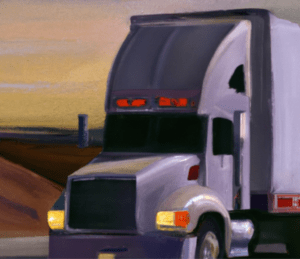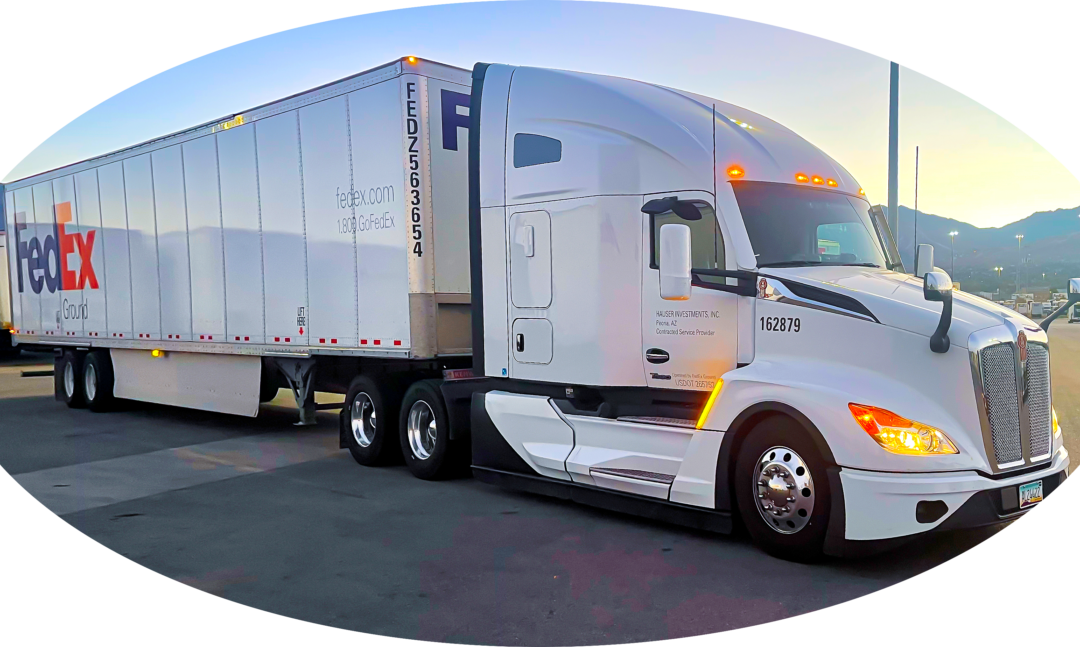We see them every day – big rigs on the road. But you may not know how the United States created, and came to rely so heavily on, the trucking industry…
The trucking industry is a critical part of the global economy. It is responsible for transporting goods and raw materials across vast distances, connecting producers with consumers. Over the years, the industry has undergone significant changes, driven by advances in technology, changes in regulations, and shifts in consumer demand.
Origins
 The origins of the trucking industry can be traced back to the early 20th century. At the time, railroads were the primary means of transportation for goods, but they had their limitations. Railways had limited reach, and they were slow and inflexible. This meant that many businesses needed to use horse-drawn wagons or other forms of transport to move goods from the railway to their final destination. However, the use of these wagons was limited by the speed and distance that horses could travel, and as a result, it was difficult to transport goods efficiently and quickly. In the early 20th century, advancements in technology and the development of the internal combustion engine led to the creation of the first motorized trucks.
The origins of the trucking industry can be traced back to the early 20th century. At the time, railroads were the primary means of transportation for goods, but they had their limitations. Railways had limited reach, and they were slow and inflexible. This meant that many businesses needed to use horse-drawn wagons or other forms of transport to move goods from the railway to their final destination. However, the use of these wagons was limited by the speed and distance that horses could travel, and as a result, it was difficult to transport goods efficiently and quickly. In the early 20th century, advancements in technology and the development of the internal combustion engine led to the creation of the first motorized trucks.
It wasn’t until the invention of the internal combustion engine that the modern trucking industry began to take shape. In 1896, the first gasoline-powered truck was built by German automotive pioneer Gottlieb Daimler. This early truck was primitive by modern standards, but it paved the way for the development of more advanced vehicles.
The first motorized trucks were essentially modified versions of existing automobiles, with a cargo bed attached to the back of the vehicle. These early trucks were slow and unreliable, but they were still a significant improvement over horse-drawn wagons in terms of speed and efficiency. By the 1920s, trucks had become the primary means of transportation for goods in many parts of the world. In the 1920s and 1930s, the trucking industry began to grow rapidly, as businesses recognized the benefits of using trucks to transport goods over long distances.
From humble beginnings with horse-drawn wagons to the modern-day fleets of tractor-trailers, the trucking industry has evolved and transformed over time to become an essential part of the country’s economy and infrastructure.
One of the key factors that contributed to the growth of the trucking industry was the development of the interstate highway system in the 1950s. The construction of these highways made it possible for trucks to travel long distances quickly and efficiently, which made it easier for businesses to transport goods across the country. As a result, the trucking industry continued to grow and expand throughout the latter half of the 20th century.
Regulation
 As the trucking industry grew, so did the need for regulation. In the 1930s, the federal government began to regulate the trucking industry, primarily to ensure safety and prevent companies from engaging in unfair practices. In the United States, this regulation began with the passage of the Motor Carrier Act of 1935. This law gave the Interstate Commerce Commission (ICC) the authority to regulate trucking companies that operated across state lines.
As the trucking industry grew, so did the need for regulation. In the 1930s, the federal government began to regulate the trucking industry, primarily to ensure safety and prevent companies from engaging in unfair practices. In the United States, this regulation began with the passage of the Motor Carrier Act of 1935. This law gave the Interstate Commerce Commission (ICC) the authority to regulate trucking companies that operated across state lines.
One of the primary reasons for the Motor Carrier Act was to address the issue of safety. At the time, there were few regulations governing the trucking industry, and accidents were common. The ICC was tasked with setting standards for trucking companies, including requirements for vehicle maintenance, driver qualifications, and insurance.
In the decades that followed, the federal government continued to regulate the trucking industry. In 1956, the Federal-Aid Highway Act was passed, which provided funding for the construction of the interstate highway system. This new network of highways made it easier for trucks to transport goods across the country, but it also increased the need for regulation.
In 1980, the trucking industry underwent a major regulatory change with the passage of the Motor Carrier Act of 1980. This law deregulated the trucking industry, allowing trucking companies to set their own rates and routes. It also eliminated many of the restrictions on the size and weight of trucks.
The deregulation of the trucking industry had a significant impact on the industry. It led to increased competition and lower prices, but it also led to the consolidation of many smaller trucking companies. Today, the trucking industry is dominated by a few large companies that operate across the country.
Technology and Innovation
In recent years, the trucking industry has also been impacted by technological advancements, including the development of self-driving trucks and other automated technologies. These trucks use sensors and advanced software to drive themselves, eliminating the need for a human driver. While these innovations have the potential to improve efficiency and safety in the industry, they also raise questions about the future of the industry and the role of human drivers.
Other technological advancements in the trucking industry include the use of telematics, which allows trucking companies to monitor the performance of their vehicles in real-time. This technology can help companies identify maintenance issues before they become major problems, reducing downtime and improving safety.
Autonomous trucks have the potential to revolutionize the trucking industry, making it safer and more efficient. They can also help address the ongoing driver shortage, which is a significant issue in the industry.
Overall, the history of the trucking industry is a testament to the resilience and adaptability of American businesses and workers. From horse-drawn wagons to high-tech fleets of tractor-trailers, the industry has continued to evolve and transform over time to meet the changing needs of businesses and consumers alike. Today, the trucking industry is a vital part of the American economy, with millions of trucks on the road every day transporting goods of all kinds. The industry employs millions of drivers, mechanics, and support staff, and generates billions of dollars in revenue each year. While the industry faces its fair share of challenges, including issues related to safety, regulation, and environmental impact, it remains an essential part of the country’s transportation infrastructure.

